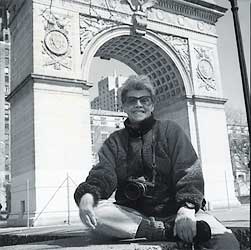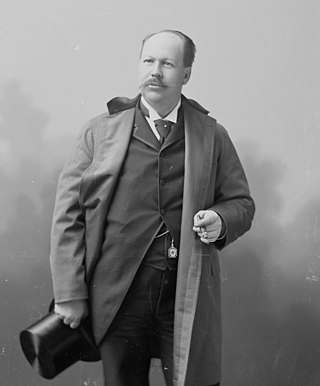Related Research Articles
John Cohen was an American musician, photographer and film maker who performed and documented the traditional music of the rural South and played a major role in the American folk music revival. In the 1950s and 60s, Cohen was a founding member of the New Lost City Ramblers, a New York–based string band. Cohen made several expeditions to Peru to film and record the traditional culture of the Q'ero, an indigenous people. Cohen was also a professor of visual arts at SUNY Purchase College for 25 years.

Esther Bubley was an American photographer who specialized in expressive photos of ordinary people in everyday lives. She worked for several agencies of the American government and her work also featured in several news and photographic magazines.
Smithsonian Folkways is the nonprofit record label of the Smithsonian Institution. It is a part of the Smithsonian's Smithsonian Center for Folklife and Cultural Heritage, located at Capital Gallery in downtown Washington, D.C. The label was founded in 1987 after the family of Moses Asch, founder of Folkways Records, donated the entire Folkways Records label to the Smithsonian. The donation was made on the condition that the Institution continue Asch's policy that each of the more than 2,000 albums of Folkways Records remain in print forever, regardless of sales. Since then, the label has expanded on Asch's vision of documenting the sounds of the world, adding six other record labels to the collection, as well as releasing over 300 new recordings. Some well-known artists have contributed to the Smithsonian Folkways collection, including Pete Seeger, Ella Jenkins, Woody Guthrie, and Lead Belly. Famous songs include "This Land Is Your Land", "Goodnight, Irene", and "Midnight Special". Due to the unique nature of its recordings, which include an extensive collection of traditional American music, children's music, and international music, Smithsonian Folkways has become an important collection to the musical community, especially to ethnomusicologists, who utilize the recordings of "people's music" from all over the world.
Ralph Rinzler was an American mandolin player, folksinger, and the co-founder of the annual Smithsonian Folklife Festival on the Mall every summer in Washington, D.C., where he worked as a curator for American art, music, and folk culture at the Smithsonian. This festival was from the beginning and continues to be a major event for musicians, artistans, and craftsman from a broad variety of American culture, including African American, Native American, Appalachian, Southern, Western and other groups in the United States.
The Center for Folklife & Cultural Heritage (CFCH) is one of three cultural centers within the Smithsonian Institution in the United States. Its motto is "culture of, by, and for the people", and it aims to encourage understanding and cultural sustainability through research, education, and community engagement. The CFCH contains (numerically) the largest collection in the Smithsonian, but is not fully open to the public. Its budget comes primarily from grants, trust monies, federal government appropriations, and gifts, with a small percentage coming from the main Smithsonian budget.
The Sophia Smith Collection at Smith College is an internationally recognized repository of manuscripts, photographs, periodicals and other primary sources in women's history.

Carmen Vázquez was an American activist, writer, and community intellectual.
Joan E. Biren or JEB is an American feminist photographer and film-maker, who dramatizes the lives of LGBT people in contexts that range from healthcare and hurricane relief to Womyn’s Music and anti-racism. For portraits, she encourages sitters to act as her “muse”, rather than her “subject”. Biren was a member of The Furies Collective, a short-lived but influential lesbian commune.

Katherine Lahusen was an American photographer, writer and gay rights activist. She was the first openly lesbian American photojournalist. Under Lahusen's art direction, photographs of lesbians appeared on the cover of The Ladder for the first time. It was one of many projects she undertook with partner Barbara Gittings, who was then The Ladder's editor. As an activist, Lahusen was involved with the founding of the Gay Activists Alliance (GAA) in 1970 and the removal of homosexuality from the American Psychiatric Association's Diagnostic and Statistical Manual of Mental Disorders (DSM). She contributed writing and photographs to a New York–based Gay Newsweekly and Come Out!, and co-authored two books: The Gay Crusaders in 1972 with Randy Wicker and Love and Resistance: Out of the Closet into the Stonewall Era, collecting their photographs with Diana Davies in 2019.
Diana Walker is an American photographer known for her work as a Time magazine White House photographer from 1984 to 2004.

Bettye Lane was an American photojournalist known for documenting major events within the feminist movement, the civil rights movement, and the gay rights movement in the United States. She joined CBS television in 1960, and from 1962 to 1964 she was with the Saturday Evening Post. Her work has been published in the National Observer, Time, Life, and the Associated Press.

Charles Milton Bell was an American photographer who was noted for his portraits of Native Americans and other figures of the United States in the late 1800s. He was called "one of Washington's leading portrait photographers during the last quarter of the nineteenth century" by the Library of Congress.
Roland L. Freeman was an American photographer and documenter of Southern folk culture and African-American quilters. He was the president of The Group for Cultural Documentation, founded in 1991 and based in Washington, D.C.

Frances Aretta Carpenter was an American folklorist, author, and photographer. She traveled to, and published collections of folk stories from, nations on five continents.
Ellen Shumsky is a lesbian feminist activist, photographer, psychoanalytic teacher, psychotherapist, supervisor, and writer.

Ming Smith is an American photographer. She was the first African-American female photographer whose work was acquired by the Museum of Modern Art in New York City.
Esther "Esta" Nesbitt, born as Esther Feuerman (1918–1975), was an American illustrator, xerox artist, filmmaker, and educator. Between the 1940s until the 1960s, Nesbitt actively led a career as a fashion illustrator for leading magazines and newspapers including Harpers Bazaar, Mademoiselle, and the New York Times Magazine. In the 1960s she began experimenting with fine art, in multidisciplines and with xerox art.

Sophia Wells Royce Williams was an American civic activist, philanthropist, and photographer, who with her husband, Talcott Williams, donated a substantial collection of Moroccan ceramics and other materials to the Smithsonian Institution and the Penn Museum. She was the subject of a Thomas Eakins portrait, entitled The Black Fan, now in the Philadelphia Museum of Art.
Kady (Kathleen) Van Deurs (1928-2003) was a lesbian activist, artist, and writer. She published two books of her writing, titled, The Notebooks That Emma Gave Me: The Autobiography of a Lesbian (1978) and Panhandling Papers (1989).
References
- 1 2 3 4 5 Stephanie Smith; Joyce Capper; Jillian Foley; Meaghan McCarthy (2004–2005). "Diana Davies Photograph Collection Finding Aid" (PDF). Ralph Rinzler Folklife Archives and Collections, Smithsonian Institution.
- 1 2 "Diana Davies Papers, 1960s-1996 (ongoing)". Sophia Smith Collection . Smith College. Archived from the original on 28 May 2013. Retrieved 28 September 2013.
 This article incorporates text available under the CC BY 3.0 license.
This article incorporates text available under the CC BY 3.0 license. - 1 2 3 4 "Diana Davies photographs · SOVA". sova.si.edu. Retrieved 2020-05-13.
- 1 2 3 "Sistervision: Seeing Women's Lives. Photos by Diana Davies- An exhibit in the Sophia Smith Collection". Smith College Libraries. March 2000. Archived from the original on 2016-10-01. Retrieved 2017-03-05.
- 1 2 "Davies, Diana, 1938-". socialarchive.iath.virginia.edu. Retrieved 2017-03-05.
- ↑ Palumbo, Jacqui (2019-06-28). "The Underrecognized Photographers Who Showed Queer Life in the 1960s". Artsy. Retrieved 2020-05-15.
- ↑ Nadan, Tal (June 18, 2020). "Remembering the First New York City Pride March Through Diana Davies' Photographs". New York Public Library. Retrieved 2020-06-24.
- 1 2 Meyer, Will (2018-02-12). "Basemental: The World According to Moggie". Valley Advocate. Retrieved 2020-05-15.
- ↑ "Diana Davies Photograph Collection". Diana Davies Photograph Collection Finding Aid. Smithsonian Institution . Retrieved 28 September 2013.
- ↑ "Remembering the First New York City Pride March Through Diana Davies' Photographs". The New York Public Library. Retrieved 2020-06-24.
- ↑ Davies, Diana (1989-01-01). Photojourney: photographs. Bag Lady Press. ISBN 9780962243202.